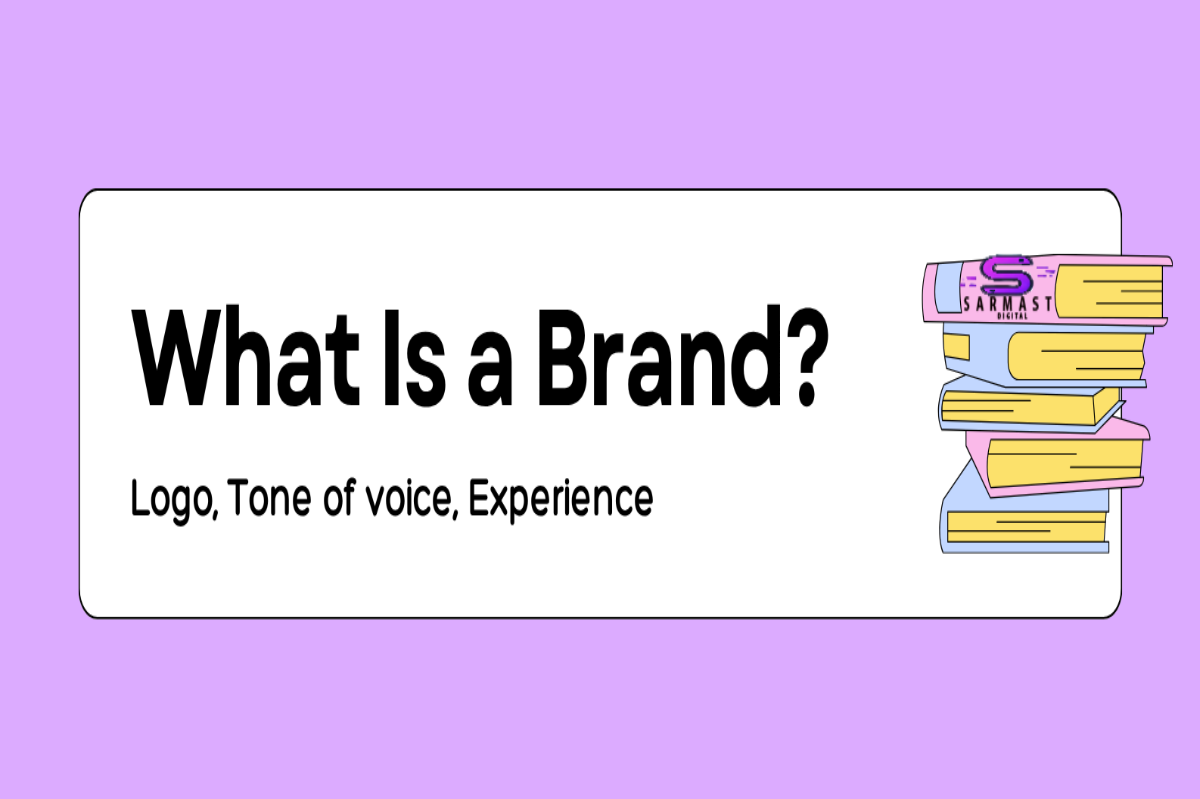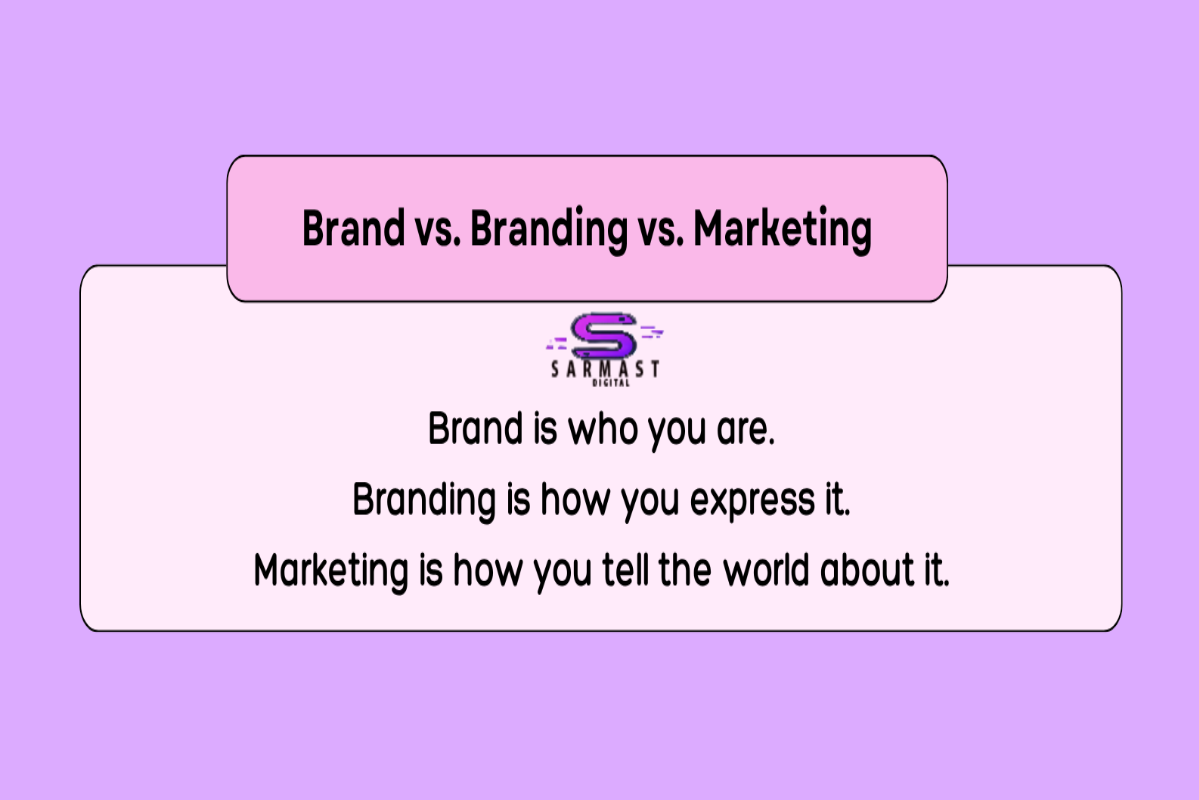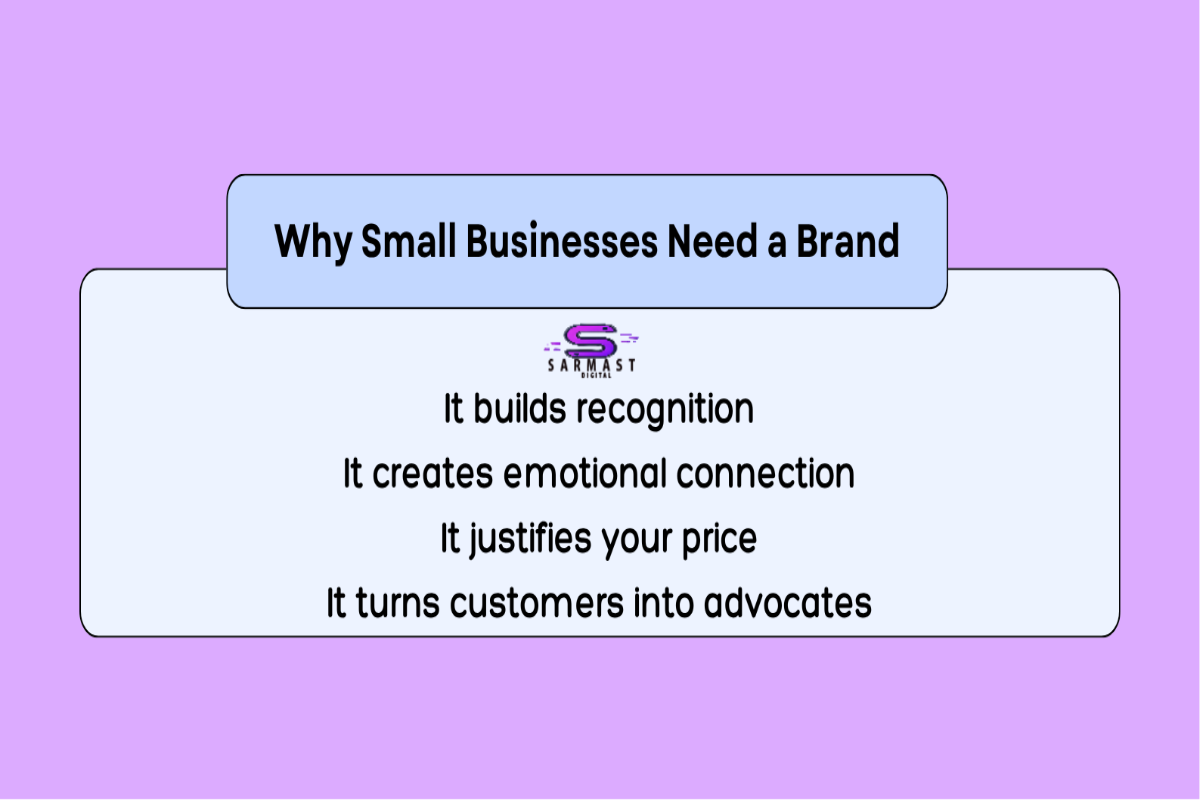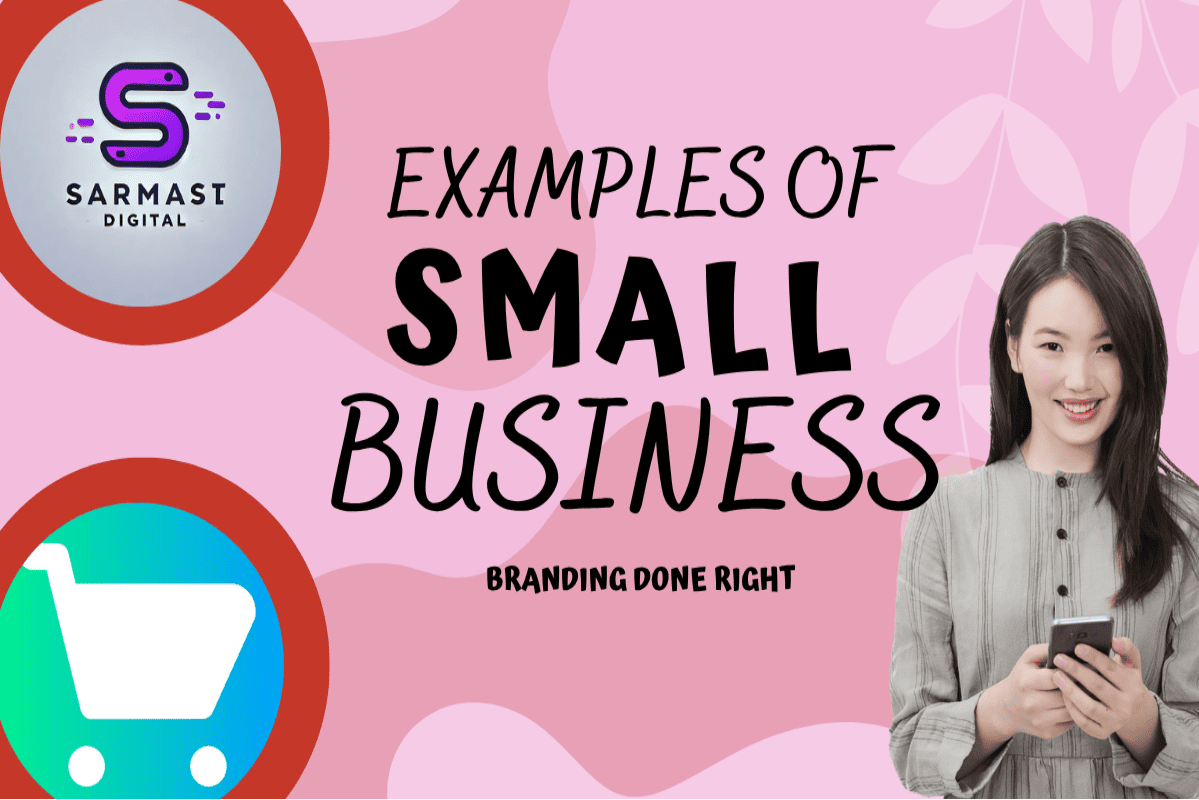Introduction
Your business might already have a logo, colors, and a catchy name. But here’s a question: do you really have a brand?
For many small business owners, “branding” feels like something only big companies worry about. In reality, your brand is the reason customers choose you over someone else—even if they can’t quite explain why.
In this article, you’ll learn what a brand truly means (beyond design), how it affects your business’s reputation, and why investing in small business branding is one of the smartest decisions you can make.
What Is a Brand?
At its core a brand is much more than your logo, name or product. It’s the feeling people get when they think about your business.
It’s the story they tell themselves about who you are—based on every experience, message and interaction they’ve ever had with your company.
Think of your brand as your business’s personality. It’s how you make customers feel.
-
Logo: What people see
-
Tone of voice: What people hear
-
Experience: What people remember
If your logo disappeared tomorrow, would people still recognize your business by the way it communicates, serves customers, and delivers value? If yes, you have a brand.
🟢 Actionable takeaway:
A strong brand makes your business recognizable even without showing your logo. Think of Starbucks—its tone, service, and style are so distinct that you’d notice them anywhere.

Brand vs. Branding vs. Marketing
These three words often get mixed up, but they play very different roles:
| Term | Meaning | Example |
|---|---|---|
| Brand | The perception people have about your business. | “They’re friendly and trustworthy.” |
| Branding | The process of shaping that perception through design, messaging, and experience. | Choosing colors, logo, and communication style. |
| Marketing | The tactics used to promote your brand and attract customers. | Running ads, SEO, or social media campaigns. |
You can think of it this way:
-
Brand is who you are.
-
Branding is how you express it.
-
Marketing is how you tell the world about it.
Without a clear brand identity, marketing feels random—like shouting into a crowded room without knowing who’s listening.
💡 Pro tip:
Before spending on ads or SEO, make sure your brand story and values are clear. Otherwise, your marketing will attract traffic but not loyalty.

Why Small Businesses Need a Brand
Many small businesses survive without a brand—but very few grow without one.
Here’s why:
-
It builds recognition.
When customers remember you easily, they come back. Branding helps you look consistent and professional across every platform. -
It creates emotional connection.
People don’t just buy products; they buy stories and values. A bakery that says “We bake with love and local ingredients” will attract customers who share that value. -
It justifies your price.
When your brand communicates quality, people stop comparing you to cheaper competitors. -
It turns customers into advocates.
A memorable experience encourages people to recommend your business.
Imagine two local coffee shops: one just sells coffee, the other stands for “slow mornings and good conversations.” Which one would you remember?
✅ Actionable takeaway:
Write one sentence that defines your brand’s promise to customers.
Example: “We help small business owners look big online—without big budgets.”

How a Strong Brand Builds Trust and Visibility
Trust is the real currency of business. And trust starts with consistency.
When your visuals, tone and customer experience all align, people feel safe buying from you—even if you’re new to them.
Here’s how a strong brand helps:
-
Consistency builds credibility.
Use the same logo, colors and tone everywhere—your website, invoices, emails, and Instagram. It makes your business look stable and reliable. -
Authenticity builds loyalty.
People trust brands that sound human. Don’t try to sound like a corporation; sound like you. -
Visibility increases with familiarity.
Every time someone sees your name or content, they start recognizing you. Over time, recognition becomes trust.
🔗Internal link idea:
Read next: How to Build Brand Trust Online
✏️ Example:
A local yoga studio started sharing short “behind the scenes” videos showing their teachers preparing classes. Within three months, attendance grew—not because of ads, but because people trusted the faces behind the brand.

Examples of Small Business Branding Done Right
Let’s look at a few real-world examples that show what small business branding looks like in action:
1. A Neighborhood Bakery with Heart
A small bakery in a busy neighborhood decided to make “homemade comfort” its brand identity.
Instead of focusing on discounts, it told stories about local ingredients and childhood recipes. The result? Loyal customers who lined up not just for bread, but for nostalgia.
Takeaway: Emotional branding beats price wars every time.
2. A Freelance Designer’s Personal Brand
A freelance web designer built her personal brand around the phrase “Simple Sites That Sell.”
Her posts, portfolio, and emails all repeated this message in different ways.
Clients started reaching out saying, “I love your simple style!”
Takeaway: Clarity attracts clients who fit your style and values.
3. A Family-Owned Repair Shop
Instead of promoting “cheap repairs,” a small repair shop branded itself around “honesty first.” They shared real stories of saving customers money and avoiding unnecessary repairs.
That honesty became their best marketing tool.
Takeaway: Authentic stories can become your brand identity.

Simple Steps to Start Building Your Brand Today
You don’t need a big budget or fancy agency to build your brand. You just need direction, clarity and consistency.
Here’s a practical roadmap you can start today:
1. Define Your Core Message
What’s the promise you make to your customers?
Examples:
-
“We make marketing simple.”
-
“We care for your pets like family.”
-
“We bring small-town warmth to online shopping.”
That single sentence is your north star.
2. Choose Your Visual Identity
Pick 2–3 brand colors, 1 or 2 fonts and a simple logo that reflect your personality.
You can use free tools like Canva or Coolors to experiment.
🎨 Tip: Your colors and logo don’t need to be perfect. They just need to be consistent.
3. Find Your Voice
Decide how you want to sound: friendly, expert, bold or caring?
Use that tone in every email, caption, and reply.
If your brand were a person, how would they talk? That’s your voice.
4. Be Consistent Everywhere
Repeat your message and visuals across your website, social media, and packaging.
Repetition builds recognition. Recognition builds trust.
5. Tell Your Story
Share your journey—why you started, what challenges you faced, what drives you.
Stories create emotional connections far stronger than product features.
6. Deliver on Your Promise
Every customer interaction either builds or breaks your brand.
A kind reply, fast delivery or small thank-you note can turn a one-time buyer into a loyal fan.
💬 Quote to remember:
“Your brand is what people say about you when you’re not in the room.” — Jeff Bezos

Conclusion
Your brand isn’t what you say it is—it’s what people feel it is.
Even as a small business or freelancer, building a brand gives you power, direction and recognition.
Start small: define your message, be consistent, and show up authentically.
Because once people trust your brand, growth becomes easier and marketing becomes more meaningful.
FAQ: What Is a Brand (and Why Small Businesses Need One)
1. What are the key elements of a brand?
The main elements include your brand identity (logo, colors, fonts), tone of voice, values, and the overall customer experience. Together, these create the emotional connection people have with your business.
2. What’s the difference between a brand and a logo?
A logo is a visual symbol; a brand is the feeling behind it. Your logo identifies you, but your brand defines how people remember you.
3. Can small businesses build a strong brand on a low budget?
Absolutely. Branding isn’t about spending money—it’s about consistency and clarity. With free tools and authentic storytelling, you can build a memorable brand without hiring an agency.
Suggested External Source for Credibility:
Harvard Business Review – The Importance of Branding in Business
📱 See It in Action
Watch our short Instagram reel to see how these strategies come to life 👇
big goals, small steps 💫
